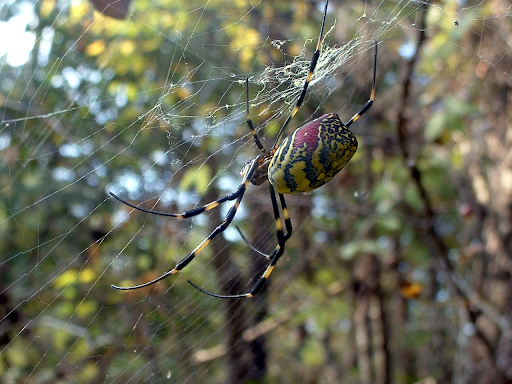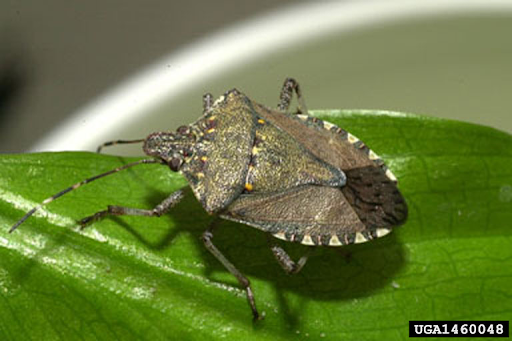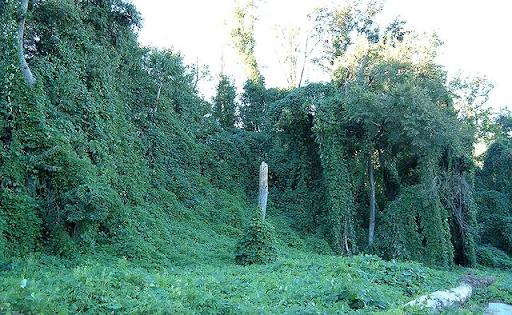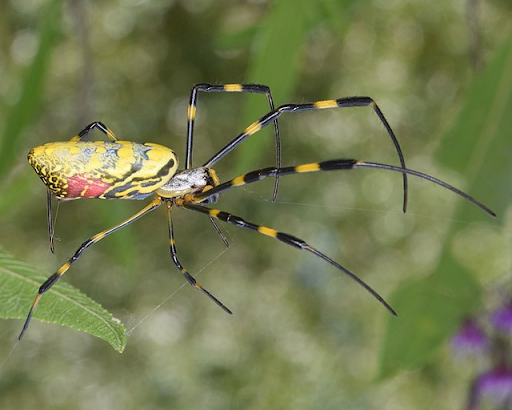On an otherwise entirely forgettable late-summer morning during the height of pandemic-induced self-isolation, I stepped out onto my front porch and saw the biggest spider I had ever seen in my life suspended above my hedges, hanging in the middle of an elaborate web. My new neighbor was as big as my palm, bright yellow with bold red markings on its abdomen, and had black stripes running all along its gangly legs. I immediately went to grab my phone and used the Seek app to get a species identification: Trichonephilia clavata, the Joro Spider. Naturally, as any young person would do when confronted with something as new and interesting as a cool spider, I posted some pics on the ‘gram so I could get those sweet, sweet likes. Indeed, the likes came quickly but a comment came in as well that read: “Hey, just so you know, those spiders are invasive!â€

It turns out that the Joro Spider is actually from East Asia and likely hitched a ride on a shipping container into Hoschton, Georgia some time in 2013. In 2020, the population of Joro spiders in Athens, Georgia had grown to the point where many people, including myself, began noticing them for the first time. It seemed like every time I would walk down the greenway, I would see somebody entranced by the spiders in the bushes or trying to capture a good photo of them. Now, in 2021, populations have exploded to the point where what once was a public curiosity is now a public concern.
UGA Entomologist Dr. Nancy Hinkle isn’t worried, however. In an interview with USA Today, Dr. Hinkle is quoted saying, “Joro spiders present us with excellent opportunities to suppress pests naturally, without chemicals…. I'm trying to convince people that having zillions of large spiders and their webs around is a good thing.†It turns out the Joro spider actually feasts on another non-native pest, the brown marmorated stink bug. If the Joro can help manage the stink bug population, then they might actually be good for our ecosystems!

This optimism seemed strange to me though. How could an invasive species be potentially good for our ecosystem? Aren't all invasive species supposed to be bad?
It turns out the term invasive species is often used without much care when describing species introduced from another place. The proper term to be used is “non-native†species. Those non-native species that cause ecological or economic harm are further classified as invasive. So, yes all invasive species are bad, but not all non-native species are invasive.
There are many non-native species here in Georgia that are invasive and have caused substantial harm to our ecosystems. The most dominant invasive species in the Georgia landscape is of course the ubiquitous Kudzu. Kudzu was intentionally introduced into the state in 1931 as a cover crop to help with erosion control, but Kudzu can grow up to a foot per day and up to 60 feet per season, meaning it was impossible for farmers to control and quickly took over the state. Meanwhile, Cryphonectria parasitica, the fungus responsible for causing Chestnut Blight, arrived from East Asia and completely eradicated the American Chestnut tree, which at one point was one of the most dominant tree species in the region.
While some invasive species have caused irreparable damage to Georgia ecosystems, other non-native species have been massively beneficial. Georgia is well known for its peaches, so much so that the Georgia peach has become an icon for the state, yet the Peach tree was introduced from China to North America by Spanish traders in the 1500s. Honey bees were introduced from Europe in the 17th century, yet have become so beloved as a pollinator and producer of honey that their dwindling populations in the Americas has become an immense concern for the informed citizen.
In a controversial article published in 2011 by Schlaepfer et al. in Conservation Biology, the authors argued that there would be an increasing utility for the use of non-native species to aid conservation efforts. The authors suggested that non-native species could be used to provide food or habitat to rare species, serve as functional substitutes for extinct species, or be catalysts for the restoration of native species. This might mean that we can use non-native species as a tool for increasing biodiversity instead of reducing it! There were, of course, several examples cited to back up these claims with the ultimate message being that while non-native species have indeed caused serious harm, the benefits of non-native species are often highly overlooked.

A response published the following year by Vitule et al. in Conservation Biology called into question the claims made in that article. These authors argued that it is impossible to predict what the impact of a non-native species will be when introduced and that the effects might not be observed in full until years later. They suggest it would be shortsighted and ill-advised to use non-native species as tools for conservation (remember Kudzu?) and that extensive management of all non-native species is necessary to prevent further ecosystem destruction. This, of course, brings us back to square-one, the Joro spider.
UGA Ecologist Dr. Byron Freeman, who worked with Dr. Rick Hoeboke to first confirm the genetic identity of the spider in Georgia, admitted to UGA Today that, “We don't know what the impact is going to be…. Right now, we're trying to learn as much as we can about them.†The truth of the matter is that it will take some time before we understand what the repercussions of having the Joro spiders in our backyards is going to be. We can tear down their webs and eradicate them from our gardens, but they won't be leaving any time soon.

The Joro spider has captivated me and many others here in Georgia during a time where there wasn't a lot of good to be found in the world, and for that selfish reason alone I hope the Joro spider won't become a pest to be despised. It would, however, be irresponsible to not acknowledge the potential risk the arrival of the Joro might have on Georgia ecosystems. We live in a world that's more interconnected than ever before, both for us as people, and for all of the other life that inhabits earth. This means that the Joro spider will be far from the last species to show up on our doorstep from halfway around the world and we need to prepare for that.
It won't be long before the Joro spiders disappear for the season as the weather gets colder. So for now, we might as well enjoy the free Halloween decorations. Just know they'll be back year after year to greet you on your doorstep.
Featured image by Patrick Randall via Flickr. Some rights reserved.
About the Author
Max Barnhart is a PhD studying the evolution of heat stress resistance in sunflowers at the University of Georgia. He is also the current Co-Editor-in-Chief of the Athens Science Observer. Growing up in Buffalo, NY he is a diehard fan of the Bills and Sabres and is also an avid practitioner of martial arts, holding a 2nd degree black belt in Taekwondo. You can contact Max at maxbarnhart@uga.edu or @MaxHBarnhart.
- Max Barnharthttps://athensscienceobserver.com/author/max-barnhart/November 11, 2020
- Max Barnharthttps://athensscienceobserver.com/author/max-barnhart/October 19, 2019
- Max Barnharthttps://athensscienceobserver.com/author/max-barnhart/October 15, 2019
- Max Barnharthttps://athensscienceobserver.com/author/max-barnhart/September 22, 2019








